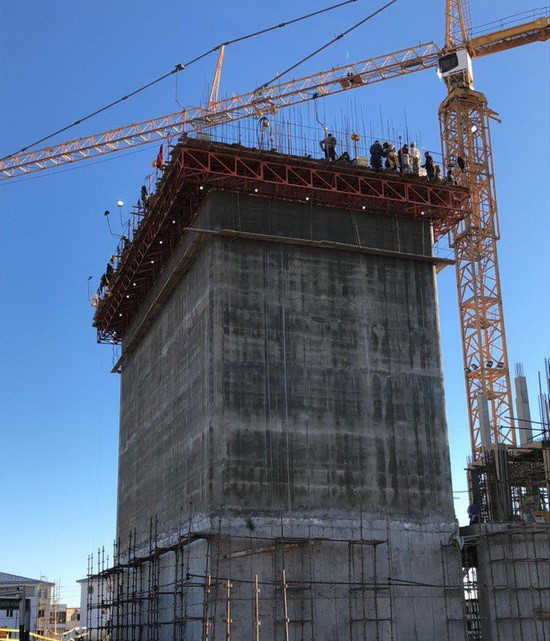High Strength Concrete
For constructing High-Rise Buildings, or special ones, High Strength Concrete (HSC) is appropriate, which has unique characteristics. High Strength Concrete generally refers to concrete with a compressive strength of 60 to 100 MPa. Vandidad company produces all kinds of HSC ranging from 50 to 120 MPa of compressive strength.
What is High Strength Concrete?
Ordinary concrete is a combination of cement, sand, and water. To increase its compressive strength, it is necessary to change the concrete mix design and use new and authorized additives. The most important key in the preparation and manufacture of High Strength Concrete (HSC) is to reduce the water-cement ratio as much as possible, for which you can use existing plasticizers and superplasticizers under regulations. Another significant factor in achieving high strength is using resistant aggregates besides silica fillers of tiny sizes. All of this preparation will lead to the production of High Strength Concrete.

Effective parameters in making high strength concrete
All components, including cement, aggregate, water and other additives, play a role in the production of HSC concrete.
-
Cement
One of the most important components of concrete is cement. Its type and amount affects the strength of concrete significantly. According to research, ordinary Portland cement (type one) with the appropriate portion in most cases leads to the production of High Strength Concrete.
-
Aggregates
The next influential factor is the grading of aggregates. The appropriate quality and texture of aggregate and the size of the largest one have a crucial effect on achieving high strength concrete.
-
Admixtures
As mentioned, reducing the water-cement ratio plays a meaningful role in making High Strength Concrete. To reduce this ratio, plasticizers and super-plasticizers are applied in the allowable amount specified in the codes and standards. In addition to reducing the water-cement ratio in concrete, these admixtures increase the workability of concrete.
-
Alternatives to cement
Pozzolans are a broad class of siliceous and aluminous materials that, by themselves, possess little or no cementitious value but which will, in the presence of water and alkaline activators, react chemically at ordinary temperature to form compounds possessing cementitious properties. These pozzolanic reaction products fill in pores resulting in a much denser binder with a lowered permeability. The most commonly used pozzolans are fly ash, slag, and Microsilica.
Advantages of high strength concrete
The most important criterion for assessing concrete is its strength. The most effective factors were mentioned above. Some of the characteristics of High Strength Concrete (HSC) are:
- Special mechanical properties such as high initial and final strength, low shrinkage and creep, durability, and high elasticity modulus
- Suitability for the infrastructures such as bridges, dams, stadiums, and towers
- Resistance to aggressive chemical agents
- Relatively high efficiency and increasing the speed of execution of constructing
- Reducing the dimensions of concrete structural elements and thus reducing the cost of the foundation
